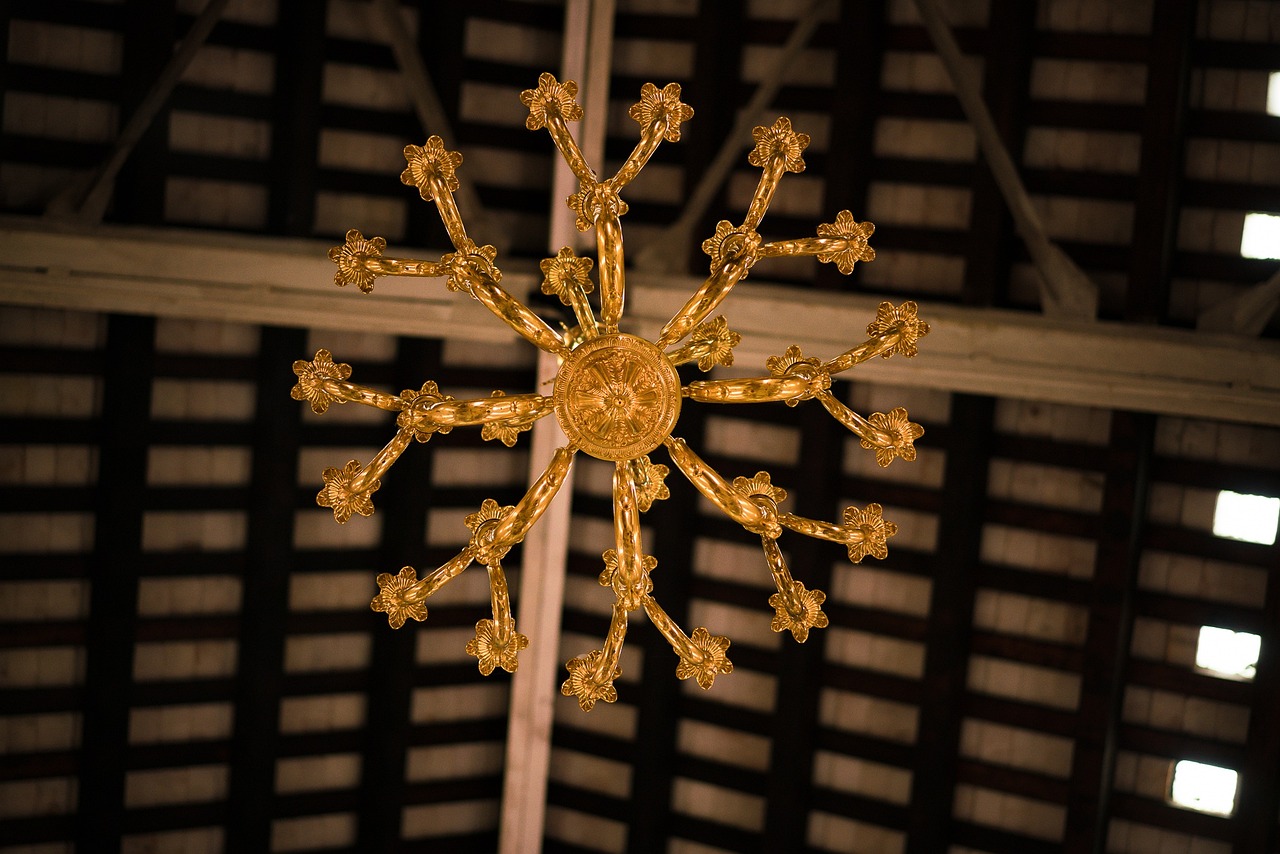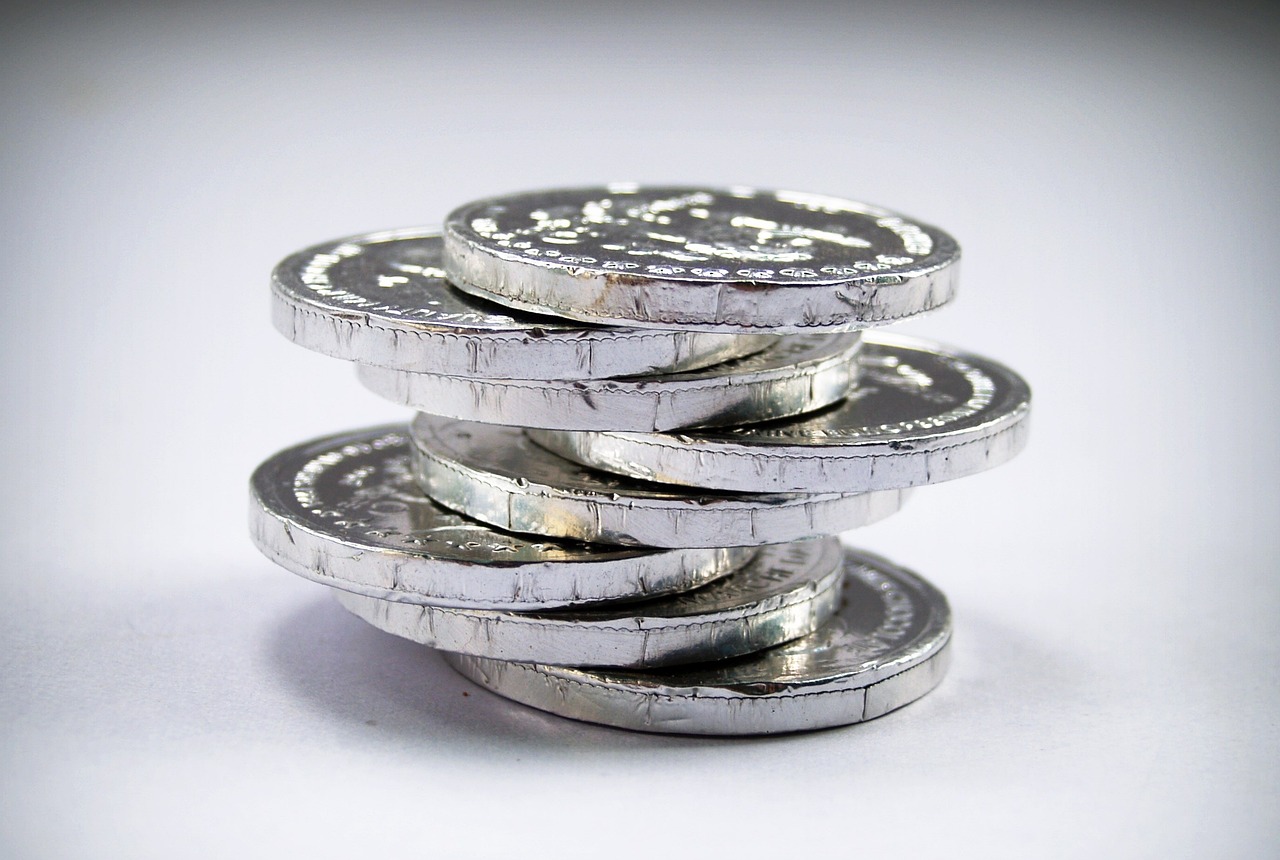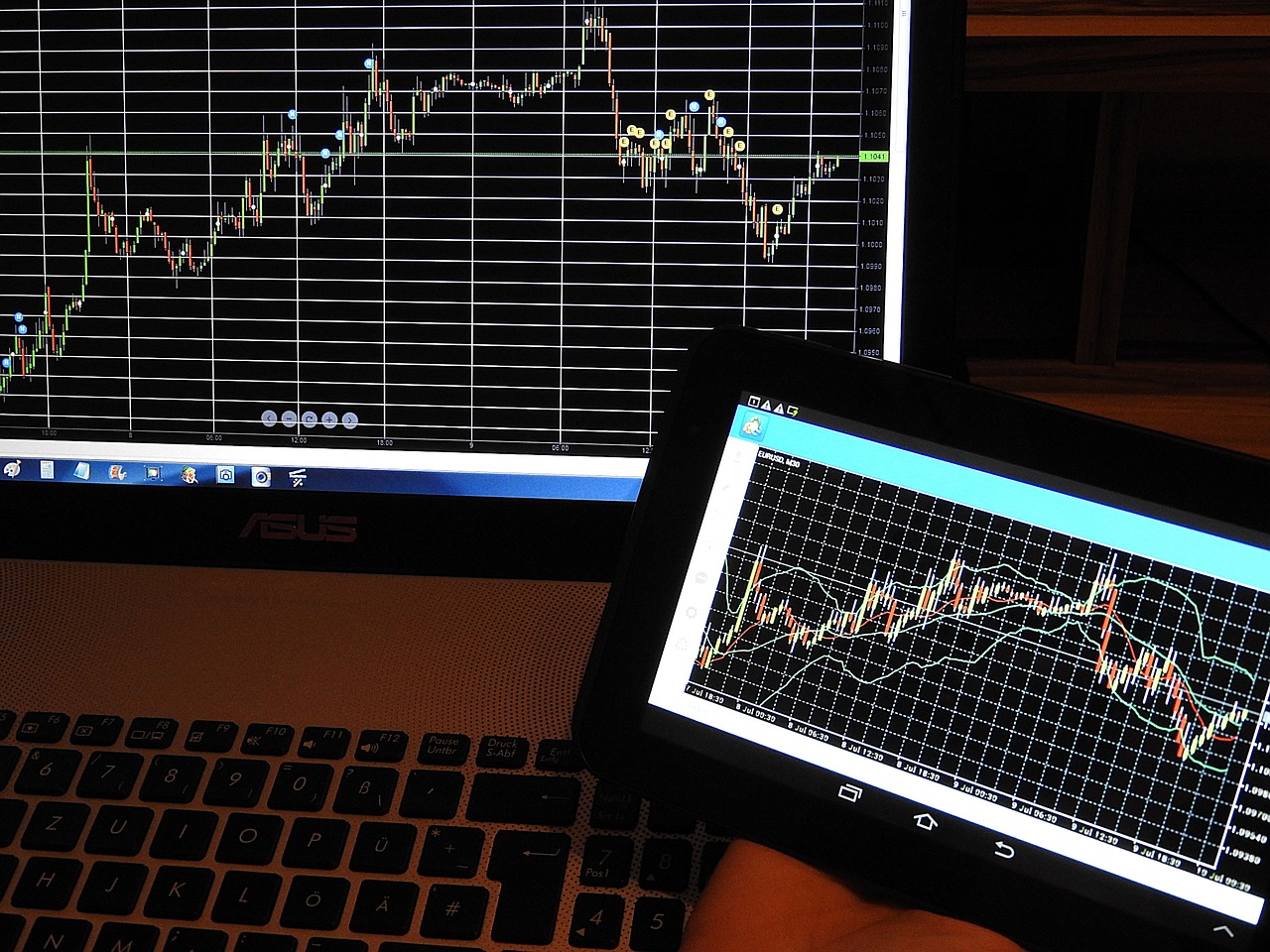Candlestick Patterns - A Trader's Secret Weapon
Candlestick patterns are not just a collection of colorful shapes on a chart; they are the heartbeat of market sentiment. For traders, understanding these patterns can be the difference between making a profit and incurring a loss. Imagine standing in front of a vast ocean, each wave representing a price movement. If you can read the waves, you can surf the market successfully. This article dives deep into the world of candlestick patterns, revealing how they can serve as a powerful tool for traders at all levels, from beginners to seasoned professionals.
At its core, trading is about making informed decisions based on data and analysis. Candlestick patterns provide a visual representation of price movements over specific time frames, allowing traders to gauge market sentiment quickly. Each candlestick tells a story, reflecting the battle between buyers and sellers during a given period. By mastering these patterns, traders can enhance their ability to predict future price movements and make strategic decisions.
But why should you care about candlestick patterns? Well, think of them as signposts along your trading journey. They guide you, offering insights into potential market reversals or continuations. Whether you're looking to enter a trade or exit one, these patterns can illuminate the path ahead. In the following sections, we will explore the basics of candlestick structures, the various types of patterns, and how to incorporate them into effective trading strategies.
So, buckle up! We're about to embark on a journey that will transform the way you view trading. By the end of this article, you'll not only understand the significance of candlestick patterns but also how to leverage them as your secret weapon in the trading arena.
- What are candlestick patterns?
Candlestick patterns are visual representations of price movements on a chart, indicating market sentiment and potential future price direction. - Why are candlestick patterns important for traders?
They help traders make informed decisions by providing insights into market trends and potential reversals. - Can I rely solely on candlestick patterns for trading?
No, it's essential to consider other market factors and indicators for a well-rounded trading strategy. - How can I practice recognizing candlestick patterns?
Start by analyzing historical charts and using demo trading accounts to practice in real-time without financial risk.

Understanding Candlestick Basics
Candlestick patterns are essential tools for traders, acting as a visual representation of price movements in the market. Each candlestick tells a story, revealing the open, close, high, and low prices during a specific time frame. This information is crucial for traders who seek to understand market sentiment and make informed decisions. To fully grasp the significance of candlestick patterns, it's important to break down their components.
Each candlestick consists of two main parts: the body and the wicks. The body represents the price range between the opening and closing prices, while the wicks (or shadows) indicate the highest and lowest prices during that time period. Understanding these elements can help traders interpret the market's mood—whether it's bullish or bearish.
| Component | Description |
|---|---|
| Body | The area between the open and close prices. A filled body indicates a close lower than the open (bearish), while a hollow body indicates a close higher than the open (bullish). |
| Wicks | The lines extending from the body, showing the price extremes (highs and lows) for the period. |
Time frames play a critical role in candlestick patterns. Traders can analyze candlesticks over various time frames, such as 1-minute, 5-minute, daily, or weekly charts. Each time frame can produce different patterns and insights, making it essential for traders to choose the right one based on their trading strategy. For instance, a pattern observed on a daily chart may carry more weight than one seen on a 1-minute chart, due to the larger volume of trading activity.
Moreover, candlestick patterns can be classified into two primary groups: single candlestick patterns and multiple candlestick patterns. Single candlestick patterns, such as the doji and hammer, provide quick insights into market sentiment, while multiple candlestick patterns, like engulfing and harami, offer a more comprehensive view of market trends. Understanding these basics is the first step toward mastering candlestick analysis and enhancing your trading strategies.
In summary, the significance of candlestick patterns cannot be overstated. They are not just mere drawings on a chart; they are vital indicators of market sentiment and potential price movements. By understanding the structure of candlesticks and their components, traders can equip themselves with the knowledge needed to navigate the complex world of trading effectively.
- What is a candlestick pattern?
A candlestick pattern is a visual representation of price movements in a specific time frame, showing the open, close, high, and low prices. - Why are candlestick patterns important in trading?
Candlestick patterns help traders gauge market sentiment and predict potential price movements, aiding in better decision-making. - How do I identify a bullish or bearish candlestick?
A bullish candlestick has a hollow body (close higher than open), while a bearish candlestick has a filled body (close lower than open). - Can candlestick patterns be used in all markets?
Yes, candlestick patterns can be applied to various financial markets, including stocks, forex, and commodities.

Types of Candlestick Patterns
Candlestick patterns are like a secret language in the trading world, speaking volumes about market sentiment and potential price movements. Understanding the different types of candlestick patterns is crucial for traders looking to make informed decisions. These patterns can be broadly categorized into three groups: bullish, bearish, and neutral. Each category provides unique insights into market dynamics, helping traders anticipate future price actions.
Bullish patterns signal potential upward price movements, indicating that buyers are gaining control. One of the most recognized bullish patterns is the Engulfing pattern, where a smaller bearish candlestick is followed by a larger bullish candlestick that completely engulfs it. This pattern suggests a strong reversal from a downtrend to an uptrend, giving traders a green light to consider entering long positions.
On the flip side, bearish patterns indicate that sellers are taking charge, often leading to downward price movements. A classic example is the Evening Star, which consists of three candles: a large bullish candle, a small-bodied candle, and a large bearish candle. This pattern signifies a potential reversal from an uptrend to a downtrend, warning traders to be cautious about their long positions.
Then we have the neutral patterns, which don’t lean towards either bullish or bearish sentiments. A prime example is the Doji, characterized by a very small body and long wicks. The Doji signifies indecision in the market, where buyers and sellers are at a stalemate. Traders often interpret the Doji as a signal to wait for further confirmation before making any trading decisions.
Let’s take a closer look at some specific patterns within these categories:
| Pattern Type | Pattern Name | Implication |
|---|---|---|
| Bullish | Engulfing | Potential upward reversal |
| Bullish | Hammer | Potential upward reversal after a downtrend |
| Bearish | Evening Star | Potential downward reversal |
| Bearish | Hanging Man | Potential downward reversal after an uptrend |
| Neutral | Doji | Market indecision |
Understanding these patterns is just the beginning. Traders should also consider the context in which these patterns appear. For instance, a bullish engulfing pattern may carry more weight if it forms at a significant support level, while a doji in a trending market may suggest a potential reversal only if followed by confirmation from subsequent candles. This multi-faceted approach allows traders to make more educated decisions, enhancing their trading strategies.
In summary, recognizing the types of candlestick patterns is essential for any trader looking to navigate the complex waters of market analysis. By interpreting these patterns correctly, traders can gain valuable insights into market sentiment, ultimately leading to better trading outcomes.
- What is the significance of candlestick patterns in trading? Candlestick patterns help traders identify market sentiment and potential price movements, allowing for informed decision-making.
- Are candlestick patterns reliable? While they are useful, candlestick patterns should be used in conjunction with other technical indicators for better accuracy.
- How can I practice identifying candlestick patterns? You can practice by analyzing historical price charts and using demo trading accounts to apply your knowledge in real-time scenarios.

Single Candlestick Patterns
Single candlestick patterns are like tiny snapshots of market sentiment, providing traders with critical insights into potential price movements. These patterns are formed by just one candlestick, yet they can convey powerful messages about the market's direction. Understanding these patterns is essential for any trader looking to navigate the complexities of financial markets effectively. Among the most notable single candlestick patterns are the Doji and the Hammer, each serving a unique purpose in market analysis.
The Doji pattern is particularly fascinating. It occurs when the opening and closing prices of a candlestick are virtually the same, resulting in a very small body with long wicks on either side. This formation signifies indecision in the market, indicating that buyers and sellers are in a stalemate. When traders spot a Doji, they should pay close attention to the preceding candlesticks, as it often suggests a potential reversal or continuation of the current trend. There are several types of Doji patterns, including the Gravestone Doji, Dragonfly Doji, and Long-Legged Doji, each with its own implications for market sentiment.
On the other hand, the Hammer pattern is a bullish reversal signal that traders eagerly look for. It appears after a downtrend and features a small body located at the upper end of the trading range, with a long lower wick that indicates strong buying pressure. This pattern suggests that, although sellers pushed the price down during the session, buyers stepped in to drive the price back up, hinting at a possible trend reversal. Recognizing a Hammer can provide traders with a valuable entry point, especially when it forms near significant support levels.
To illustrate the significance of these patterns, consider the following table that outlines their characteristics:
| Pattern | Indication | Market Sentiment |
|---|---|---|
| Doji | Indecision | Neutral |
| Gravestone Doji | Potential bearish reversal | Bearish |
| Dragonfly Doji | Potential bullish reversal | bullish |
| Hammer | Potential bullish reversal | bullish |
In summary, single candlestick patterns like the Doji and Hammer are invaluable tools in a trader's arsenal. They provide immediate insights into market sentiment and can signal potential reversals or continuations. By mastering these patterns, traders can enhance their decision-making processes and increase their chances of success in the fast-paced world of trading.
- What is a candlestick pattern? A candlestick pattern is a visual representation of price movements in a specific time frame, indicating market sentiment.
- Why are single candlestick patterns important? They provide quick insights into market behavior and can signal potential reversals or continuations.
- How can I identify a Doji pattern? A Doji pattern has a very small body with long wicks on either side, indicating indecision in the market.
- What does a Hammer pattern signify? A Hammer pattern indicates a potential bullish reversal, typically found after a downtrend.

Doji Patterns
When it comes to trading, are like the pause button in a movie—an indication that something significant is about to unfold. These patterns signify indecision in the market, where buyers and sellers are at a standoff, leading to a situation where the opening and closing prices are nearly the same. Imagine standing at a crossroads, unsure of which path to take; that’s the market when a Doji forms.
There are several types of Doji patterns, each with its own unique implications. The most common types include:
- Standard Doji: This is the classic form, characterized by a small body and long wicks on either side, indicating that the market is struggling to make a definitive move.
- Gravestone Doji: This pattern appears at the top of an uptrend and suggests a potential reversal. The long upper wick signifies that buyers pushed prices higher, but sellers took control by the close.
- Dragonfly Doji: Conversely, this pattern typically forms at the bottom of a downtrend and indicates a potential bullish reversal. Here, the long lower wick shows that sellers drove prices down, but buyers stepped in to push the price back up.
Understanding the context in which a Doji appears is crucial. For instance, a Doji following a strong uptrend may signal that the bulls are losing momentum, leading traders to consider potential selling opportunities. On the flip side, a Doji after a downtrend could indicate that the bears are losing grip, suggesting a possible buying opportunity.
To effectively utilize Doji patterns in your trading strategy, it’s essential to confirm them with other indicators. For instance, pairing a Doji with a momentum indicator like the Relative Strength Index (RSI) can provide a clearer picture. If the RSI shows oversold conditions along with a Dragonfly Doji, it might be a strong signal to enter a long position.
Additionally, traders often look for confirmation from subsequent candlesticks. A bullish candle following a Doji could reinforce the idea of a potential reversal, while a bearish candle could suggest that the indecision is resolved in favor of the sellers. Hence, patience is key—waiting for confirmation can save you from premature entries and potential losses.
In summary, Doji patterns are powerful tools in a trader's arsenal, providing insights into market sentiment and potential reversals. By understanding their nuances and combining them with other technical indicators, traders can make more informed decisions and enhance their overall trading strategies.
Q: What does a Doji pattern indicate?
A: A Doji pattern indicates indecision in the market, where the opening and closing prices are nearly the same, suggesting that buyers and sellers are in a stalemate.
Q: How can I use Doji patterns in my trading strategy?
A: You can use Doji patterns to identify potential reversals by looking for confirmation from subsequent candlesticks and combining them with other indicators like RSI or moving averages.
Q: Are Doji patterns reliable?
A: While Doji patterns can be indicative of potential reversals, they should not be used in isolation. Always consider the overall market context and confirmation from other signals.

Hammer Patterns
Hammer patterns are fascinating little formations that can signal potential bullish reversals in the market. Imagine a hammer in the hands of a skilled carpenter; it’s a tool that can build something new from the remnants of what once was. Similarly, a hammer candlestick represents a moment of struggle between buyers and sellers, where the buyers ultimately gain the upper hand after a period of selling pressure. This pattern typically appears at the bottom of a downtrend, indicating that the tide may be turning in favor of the bulls.
The structure of a hammer is quite distinctive. It features a small body located at the upper end of the trading range, with a long lower shadow that is at least twice the length of the body. This visual representation tells us a story: sellers pushed prices down significantly during the trading session, but buyers stepped in to drive the price back up before the close. The longer the lower shadow, the more significant the buying pressure is perceived to be.
Traders often look for confirmation after spotting a hammer pattern. Confirmation can come in the form of a subsequent bullish candle that closes above the hammer's body. This is crucial because it validates the signal provided by the hammer; without it, the pattern might just be a momentary blip in the market. Therefore, patience is key. Waiting for that confirmation can help traders avoid false signals and improve their overall trading strategy.
To better understand hammer patterns, it can be helpful to visualize their characteristics in a table:
| Feature | Description |
|---|---|
| Body | Small and located at the top of the trading range |
| Lower Shadow | Long, at least twice the length of the body |
| Upper Shadow | Minimal or non-existent |
| Trend Context | Typically occurs after a downtrend |
In practical terms, hammer patterns can serve as a powerful entry point for traders. When they identify a hammer, they might consider placing a buy order just above the hammer's high. This strategy allows traders to capitalize on the potential reversal while minimizing risk. However, it’s essential to combine this pattern with other technical indicators to enhance its reliability.
In summary, hammer patterns are not just random formations on a chart; they are indicators of a potential shift in market sentiment. By recognizing and understanding these patterns, traders can position themselves advantageously in the market, much like a skilled carpenter using a hammer to build a solid foundation for their next project.

Multiple Candlestick Patterns
When it comes to trading, understanding can be a game changer. These patterns, formed by two or more candlesticks, provide deeper insights into market trends and potential price movements. Unlike single candlestick patterns, which can sometimes be ambiguous, multiple candlestick formations can offer a clearer picture of market sentiment, helping traders make more informed decisions.
For instance, one of the most notable multiple candlestick patterns is the engulfing pattern. This pattern consists of two candles; the first is a smaller-bodied candle, and the second is a larger-bodied candle that completely engulfs the first. If this occurs after a downtrend, it often signals a potential bullish reversal, while an engulfing pattern following an uptrend can indicate a bearish reversal. The strength of this pattern lies in its ability to reflect a sudden shift in market sentiment, showcasing the power of buyers or sellers in the market.
Another important pattern to consider is the harami. This pattern is characterized by a larger candle followed by a smaller candle that is contained within the body of the first. The harami can suggest indecision in the market, and its implications can vary based on the preceding trend. For example, a bullish harami appearing after a downtrend might indicate a potential reversal, while a bearish harami after an uptrend could signal a possible downturn. Understanding these nuances allows traders to gauge the strength of market movements more effectively.
To illustrate these concepts, let’s take a look at a simple comparison of the engulfing and harami patterns:
| Pattern Type | Formation | Market Implication |
|---|---|---|
| Engulfing | Smaller candle followed by a larger candle that engulfs it | Potential trend reversal (bullish or bearish) |
| Harami | Larger candle followed by a smaller candle within its body | Indecision; potential reversal (bullish or bearish) |
Incorporating multiple candlestick patterns into your trading strategy can significantly enhance your market analysis. However, it’s essential to remember that no single pattern is foolproof. Traders should always consider the broader market context and use these patterns in conjunction with other technical indicators to confirm their findings. By doing so, you can develop a more robust trading strategy that minimizes risk and maximizes potential rewards.
In summary, mastering multiple candlestick patterns can empower traders to read the markets more effectively. By recognizing the subtle shifts in market sentiment that these patterns reveal, you can make more informed trading decisions, ultimately leading to greater success in your trading journey.
- What are candlestick patterns? Candlestick patterns are visual representations of price movements in a specific time frame, used by traders to analyze market sentiment and predict future price movements.
- How do I identify an engulfing pattern? An engulfing pattern consists of two candles where the second candle's body completely engulfs the first candle's body, indicating a potential reversal in the market.
- What does a harami pattern signify? A harami pattern indicates indecision in the market, with the smaller candle contained within the larger candle, suggesting a potential reversal depending on the preceding trend.
- Can I rely solely on candlestick patterns for trading decisions? While candlestick patterns provide valuable insights, they should be used in conjunction with other technical indicators and market analysis for more effective trading decisions.

Using Candlestick Patterns in Trading Strategies
Incorporating candlestick patterns into your trading strategies can be a game-changer. These patterns offer visual insights into market sentiment that can guide your decisions, allowing you to anticipate price movements more accurately. But how do you effectively integrate these patterns into your trading routine? It's all about understanding their context and using them alongside other technical indicators to create a robust strategy.
First and foremost, it's essential to recognize that candlestick patterns are not standalone signals. They work best when combined with other tools. For instance, you might find a bullish engulfing pattern, which suggests a potential upward movement. However, if the market is in a downtrend and other indicators, like the Relative Strength Index (RSI), indicate overbought conditions, it might be wise to exercise caution. By layering information from multiple sources, you can make more informed decisions.
One effective approach is to use moving averages in conjunction with candlestick patterns. Moving averages smooth out price data to help identify trends over a specific period. For example, if a bullish candlestick pattern forms above a rising moving average, it could signal a strong buying opportunity. Conversely, if the pattern appears below a declining moving average, it might be a sign to stay away.
| Indicator | Usage with Candlestick Patterns |
|---|---|
| Moving Averages | Confirm trends and support/resistance levels. |
| Relative Strength Index (RSI) | Identify overbought or oversold conditions. |
| Bollinger Bands | Assess volatility and potential price reversals. |
Another critical aspect of using candlestick patterns effectively is risk management. Understanding how to place stop-loss orders based on candlestick formations can help protect your capital. For instance, if you enter a trade following a hammer pattern, you might set your stop-loss just below the hammer's low. This way, you minimize your risk while allowing for potential price fluctuations.
Moreover, maintaining a disciplined approach by determining your position size based on the candlestick pattern can significantly enhance your risk management strategy. By calculating the distance between your entry point and stop-loss, you can adjust your position size accordingly to ensure you’re not risking more than a predetermined percentage of your trading capital.
In summary, using candlestick patterns in trading strategies is about more than just spotting a pattern and making a trade. It's about integrating these signals with other technical indicators and maintaining strict risk management practices. This holistic approach will not only improve your trading outcomes but also build your confidence in navigating the markets.
- What are candlestick patterns? Candlestick patterns are formations created by the price movements of an asset over a specific time frame, providing visual signals about market sentiment and potential price movements.
- How can I learn more about candlestick patterns? There are numerous resources available, including online courses, books, and trading forums where you can learn about different candlestick patterns and their implications.
- Can I rely solely on candlestick patterns for trading decisions? While candlestick patterns provide valuable insights, it’s essential to combine them with other technical indicators and market analysis for more effective trading.

Combining with Technical Indicators
When it comes to trading, relying solely on candlestick patterns can sometimes feel like trying to navigate a ship through foggy waters without a compass. To truly enhance your trading strategy, it's essential to combine candlestick patterns with technical indicators. This powerful combination can provide a clearer picture of market dynamics, improving your decision-making process and ultimately leading to better trading outcomes.
Technical indicators, such as moving averages, Relative Strength Index (RSI), and Bollinger Bands, serve as additional tools that can help confirm the signals generated by candlestick patterns. For instance, when you spot a bullish engulfing pattern, checking the RSI can help you determine whether the market is overbought or oversold. If the RSI indicates that the market is oversold, it adds weight to the bullish signal from the candlestick pattern, suggesting a higher probability of a price reversal.
Here’s a quick overview of how some popular indicators can be effectively combined with candlestick patterns:
| Candlestick Pattern | Technical Indicator | Combination Insight |
|---|---|---|
| Hammer | Moving Average | A hammer pattern near a significant moving average can confirm a potential reversal. |
| Engulfing | RSI | Check if RSI is below 30 for bullish engulfing to confirm a strong reversal signal. |
| Doji | Bollinger Bands | A doji pattern at the upper or lower band indicates potential market reversals. |
Incorporating these indicators into your trading strategy doesn’t just enhance your analysis; it also helps you develop a more disciplined approach to trading. By having multiple confirmations for your trades, you can avoid falling into the trap of emotional trading and make decisions based on data and analysis.
However, it's crucial to remember that no strategy is foolproof. Market conditions can change rapidly, and indicators can sometimes give false signals. Therefore, always be prepared to adjust your strategy based on the latest market information. The key is to stay flexible and keep learning, as the market is constantly evolving.
As you continue to develop your trading skills, consider backtesting your combined strategies to see how they would have performed in different market conditions. This practice not only builds your confidence but also helps you refine your approach, ensuring you're ready to tackle the challenges of trading head-on.
- What are candlestick patterns? Candlestick patterns are graphical representations of price movements over a specific timeframe, showing the opening, closing, high, and low prices.
- How do I use candlestick patterns with technical indicators? You can use candlestick patterns to identify potential price movements and then confirm these signals with technical indicators like moving averages or RSI.
- Can I rely solely on candlestick patterns for trading? While they provide valuable insights, it's best to use them in conjunction with other technical indicators and market analysis for more reliable trading decisions.
- What is the best technical indicator to combine with candlestick patterns? There isn't a one-size-fits-all answer, as the best indicator can depend on your trading style. However, moving averages and RSI are popular choices.

Risk Management with Candlestick Patterns
When it comes to trading, understanding risk management is as crucial as knowing how to read candlestick patterns. The beauty of candlestick analysis lies not just in predicting price movements, but also in helping traders make informed decisions about risk exposure. By integrating candlestick patterns into your risk management strategy, you can significantly enhance your trading performance and protect your capital.
One of the primary ways to utilize candlestick patterns for risk management is by determining stop-loss placements. For instance, if you spot a bullish reversal pattern, such as a hammer, you might consider placing your stop-loss just below the low of that hammer. This way, if the market moves against you, your losses are minimized. Conversely, if you identify a bearish engulfing pattern, placing a stop-loss above the high of that pattern can safeguard your investment from unexpected price spikes.
Moreover, the size of your position should also be influenced by the candlestick patterns you observe. For example, if you see a strong bullish signal backed by a series of bullish candlesticks, you might feel more confident increasing your position size. However, if the signals are mixed or ambiguous, it might be wise to scale back your exposure. This approach to position sizing can help you manage risk effectively while still capitalizing on potential market moves.
To further illustrate this, let’s consider a simple table that outlines how different candlestick patterns can impact your risk management decisions:
| Candlestick Pattern | Action | Stop-Loss Placement |
|---|---|---|
| Hammer | Buy | Below the low of the hammer |
| Bearish Engulfing | Sell | Above the high of the engulfing candle |
| Dojis | Wait for confirmation | N/A |
Additionally, it’s essential to consider the overall market context when applying candlestick patterns for risk management. Economic indicators, market sentiment, and even geopolitical events can significantly influence price movements. Ignoring these factors could lead to misinterpretation of candlestick signals and potentially disastrous trading decisions. Therefore, always keep an eye on the bigger picture while analyzing candlestick patterns.
In summary, risk management is not merely about setting stop-loss orders; it’s about understanding the market dynamics and making calculated decisions based on the information that candlestick patterns provide. By effectively integrating these patterns into your risk management strategy, you can enhance your trading discipline and ultimately improve your success rate in the markets.
- What are candlestick patterns?
Candlestick patterns are visual representations of price movements in a specific timeframe, used by traders to analyze market trends and make trading decisions.
- How do I use candlestick patterns for risk management?
You can use candlestick patterns to determine stop-loss placements and decide on position sizing based on the strength of the signals indicated by the patterns.
- Are candlestick patterns reliable?
While candlestick patterns can provide valuable insights into market sentiment, they should be used in conjunction with other analysis tools and market context for better accuracy.
- What is the best way to learn candlestick patterns?
Practicing on demo accounts, studying historical price charts, and using educational resources can help you become proficient in recognizing and interpreting candlestick patterns.

Common Mistakes to Avoid
When diving into the world of candlestick patterns, even seasoned traders can trip over common pitfalls. It's essential to recognize these mistakes to sharpen your trading skills and enhance your decision-making process. One of the most significant errors is overtrading based solely on patterns. It's tempting to jump into trades at the sight of a bullish engulfing pattern or a hammer, but doing so without considering the broader market context can lead to substantial losses. Think of it like driving a car—just because the traffic light is green doesn’t mean you should accelerate without checking for pedestrians or other vehicles. Similarly, always ensure you’re aware of overall market conditions before making a move.
Another frequent mistake is ignoring market context. Candlestick patterns do not exist in a vacuum; they are influenced by various economic indicators and market sentiment. For instance, a bullish pattern might appear on a chart, but if economic news suggests a downturn, it could be a false signal. Always consider the bigger picture. This means keeping an eye on factors such as interest rates, inflation data, and geopolitical events that could affect market movements.
Moreover, many traders tend to misinterpret candlestick patterns due to a lack of understanding. For example, a doji indicates indecision, but some may see it as a clear signal to buy or sell without waiting for confirmation from subsequent candles. It’s crucial to understand that patterns can vary in significance depending on their context within the trend. Misreading these signals can lead to premature decisions.
Lastly, failure to practice risk management is a common oversight. Even the best candlestick patterns can lead to losses if proper stop-loss strategies are not in place. Always determine your risk tolerance and set stop-loss orders to protect your capital. This way, you can enjoy the thrill of trading while minimizing potential damage. Remember, in trading, it's not just about how much you can make, but also about how much you can afford to lose.
In summary, avoiding these common mistakes—overtrading based on patterns, ignoring market context, misinterpreting signals, and neglecting risk management—can significantly enhance your trading success. The key is to approach candlestick patterns with a well-rounded perspective, combining technical analysis with a solid understanding of the market landscape.
- What are candlestick patterns? Candlestick patterns are visual representations of price movements in a specific time frame, helping traders analyze market sentiment and make informed decisions.
- How can I avoid overtrading? Set clear trading rules and stick to them. Avoid making impulsive trades based on emotions or patterns alone.
- Why is market context important? Market context provides insights into the overall economic environment, helping traders interpret candlestick patterns more effectively.
- What should I do if I misinterpret a pattern? Always seek confirmation from additional indicators or patterns before making a trade to minimize the risk of misinterpretation.
- How can I improve my risk management? Establish a risk-reward ratio for each trade, use stop-loss orders, and never risk more than a small percentage of your trading capital on a single trade.

Overtrading Based on Patterns
Overtrading can be a trader's worst enemy, often leading to significant financial losses and emotional distress. Many traders fall into the trap of relying solely on candlestick patterns, thinking that these signals are foolproof indicators of market movements. While candlestick patterns are undoubtedly a powerful tool in a trader's arsenal, they should not be the only consideration when making trading decisions. Overtrading based on patterns occurs when traders become overly enthusiastic about potential trades and execute too many transactions without proper analysis of the broader market context.
Imagine a fisherman who catches a few big fish in a row; he might get so excited that he keeps casting his line without checking the weather or the tides. Similarly, traders can become overly confident in their ability to interpret candlestick patterns, leading them to make impulsive trades. This behavior can result in a series of losses that could have been avoided with a more disciplined approach. Here are some common pitfalls associated with overtrading:
- Ignoring Broader Market Trends: Focusing exclusively on candlestick patterns without considering overall market trends can lead to misguided trades. It's essential to analyze the bigger picture, including economic indicators and market sentiment.
- Emotional Trading: Letting emotions dictate trading decisions can cloud judgment. Traders should strive to remain calm and collected, avoiding the urge to chase after every pattern that appears.
- Insufficient Risk Management: Overtrading often leads to inadequate risk management practices. Traders may overlook setting stop-loss orders or proper position sizing, increasing their vulnerability to market fluctuations.
To avoid the pitfalls of overtrading, traders should develop a comprehensive trading plan that incorporates candlestick patterns as part of a broader strategy. This plan should include:
- Market Analysis: Always analyze the overall market conditions, including trends, support and resistance levels, and economic news that could impact price movements.
- Pattern Confirmation: Look for additional confirmation from other technical indicators before executing a trade based on a candlestick pattern.
- Setting Limits: Establish clear limits on the number of trades to execute in a given period, ensuring that each trade is justified and well thought out.
By adhering to these guidelines, traders can mitigate the risks associated with overtrading and enhance their overall trading experience. Remember, while candlestick patterns are a valuable tool, they should be used in conjunction with a holistic approach to trading that considers all aspects of the market.
- What are candlestick patterns? Candlestick patterns are graphical representations of price movements over a specific time frame, used by traders to analyze market trends and make decisions.
- How can I avoid overtrading? To avoid overtrading, create a trading plan that includes market analysis, pattern confirmation with other indicators, and limits on the number of trades.
- What is the significance of risk management in trading? Risk management is crucial in trading as it helps protect your capital, minimizes losses, and ensures long-term sustainability in your trading activities.

Ignoring Market Context
When it comes to trading, one of the most critical aspects to consider is the overall market context. Ignoring this broader picture can lead to misinterpretations of candlestick patterns and ultimately result in poor trading decisions. Think of candlestick patterns as the notes in a song; while each note has its significance, the overall melody can only be appreciated when you consider all the notes together. Just like a musician wouldn’t play a solo without understanding the entire composition, a trader should not rely solely on candlestick patterns without considering the surrounding market conditions.
Market context encompasses a variety of factors, including economic indicators, geopolitical events, and even trader sentiment. For instance, during a significant economic announcement, such as a central bank interest rate decision, candlestick patterns may become less reliable as the market reacts to the news. Traders often see wild price movements that can distort the signals that candlestick patterns typically provide. Ignoring these external influences can lead to a false sense of security in your trading strategy.
Moreover, candlestick patterns can sometimes provide conflicting signals when viewed in isolation. For example, a bullish engulfing pattern might suggest a strong uptrend, but if it appears during a broader downtrend characterized by negative economic news, it could lead to a trap for unsuspecting traders. This is why it’s essential to consider a comprehensive analysis that includes:
- Current economic indicators (e.g., unemployment rates, GDP growth)
- Market sentiment (e.g., fear or greed among investors)
- Geopolitical events (e.g., elections, trade agreements)
To illustrate how ignoring market context can affect trading decisions, consider the following hypothetical scenario:
| Scenario | Candlestick Pattern Signal | Market Context | Potential Outcome |
|---|---|---|---|
| Strong bullish engulfing pattern | Buy signal | Negative economic news released | Price drops significantly |
| Bearish doji pattern | Sell signal | Positive earnings report | Price continues to rise |
As shown in the table, the candlestick patterns may suggest one course of action, but the prevailing market context can lead to entirely different outcomes. This is why successful traders don’t just look at the patterns; they analyze the story behind the charts. They ask themselves questions like: What is happening in the economy? Are there any upcoming events that could influence the market? What do other indicators suggest?
In conclusion, while candlestick patterns are invaluable tools in a trader's arsenal, they should never be used in isolation. By incorporating a thorough analysis of the market context, traders can make more informed decisions, reducing the risk of falling into traps set by misleading patterns. Remember, trading is not just about spotting patterns; it’s about understanding the bigger picture.

Conclusion: Mastering Candlestick Patterns
Mastering candlestick patterns is not just a skill; it's an art that can transform your trading journey. As we've explored throughout this article, these patterns serve as a window into market sentiment, offering traders invaluable insights into potential price movements. Understanding the nuances of each pattern, whether they signal bullish or bearish trends, is essential for making informed decisions in the fast-paced world of trading.
To truly harness the power of candlestick patterns, it's crucial to integrate them into a broader trading strategy. This means not only recognizing patterns but also understanding how they interact with other indicators and market conditions. By doing so, you can develop a more comprehensive approach that minimizes risks and maximizes potential rewards.
Moreover, continuous learning and practice are key. The market is always evolving, and staying updated with the latest trends and techniques will enhance your trading prowess. Remember, every trader makes mistakes along the way; the goal is to learn from them. By avoiding common pitfalls, such as overtrading based solely on patterns or ignoring the broader market context, you can sharpen your analytical skills and improve your trading outcomes.
In conclusion, mastering candlestick patterns is a journey that requires patience, practice, and a willingness to learn. Embrace the process, and you'll find that these patterns are not just tools, but rather your secret weapon in navigating the complexities of the trading world.
- What are candlestick patterns?
Candlestick patterns are visual representations of price movements in financial markets, used by traders to analyze potential market trends and reversals.
- How can I learn more about candlestick patterns?
There are numerous resources available, including online courses, books, and trading forums. Practice and real-time analysis will also enhance your understanding.
- Can candlestick patterns guarantee success in trading?
No pattern can guarantee success, but understanding candlestick patterns can significantly improve your decision-making process and risk management.
- Should I use candlestick patterns alone in trading?
It is advisable to combine candlestick patterns with other technical indicators and market analysis for a more robust trading strategy.
Frequently Asked Questions
- What are candlestick patterns?
Candlestick patterns are visual representations of price movements in the market over specific time frames. They consist of a body and wicks, which together indicate the opening, closing, high, and low prices. Traders use these patterns to analyze market sentiment and make informed trading decisions.
- How can I identify bullish and bearish patterns?
Bullish patterns suggest that prices are likely to rise, while bearish patterns indicate potential price declines. By observing the shape and color of the candlesticks, traders can identify these patterns. For example, a long green candlestick often signifies bullish sentiment, whereas a long red candlestick may suggest bearish sentiment.
- What is a doji pattern and why is it important?
A doji pattern occurs when the opening and closing prices of a candlestick are nearly equal, indicating market indecision. This pattern is crucial because it can signal potential reversals in the market trend, prompting traders to reassess their positions.
- How do I use candlestick patterns in my trading strategy?
To effectively use candlestick patterns in your trading strategy, combine them with other technical indicators like moving averages or the Relative Strength Index (RSI). This combination can provide more comprehensive insights and help you make better trading decisions.
- What common mistakes should I avoid when trading with candlestick patterns?
Some common mistakes include overtrading based solely on candlestick patterns without considering the broader market context. It's essential to integrate economic indicators and market sentiment into your analysis to avoid making impulsive decisions that could lead to losses.
- Can candlestick patterns predict future price movements?
While candlestick patterns can provide insights into potential price movements, they are not foolproof. They should be used as part of a broader trading strategy that includes risk management and consideration of market conditions.



















